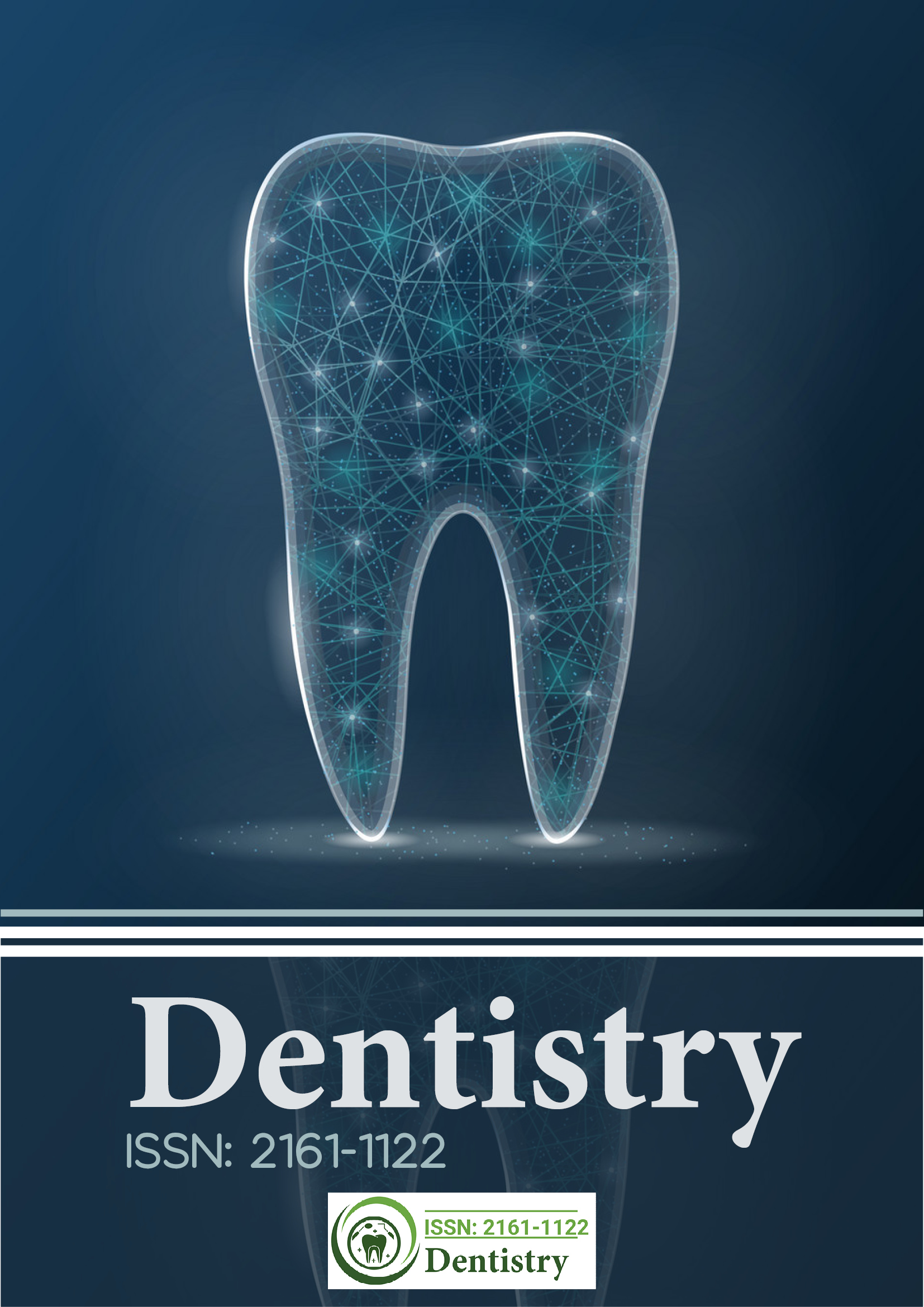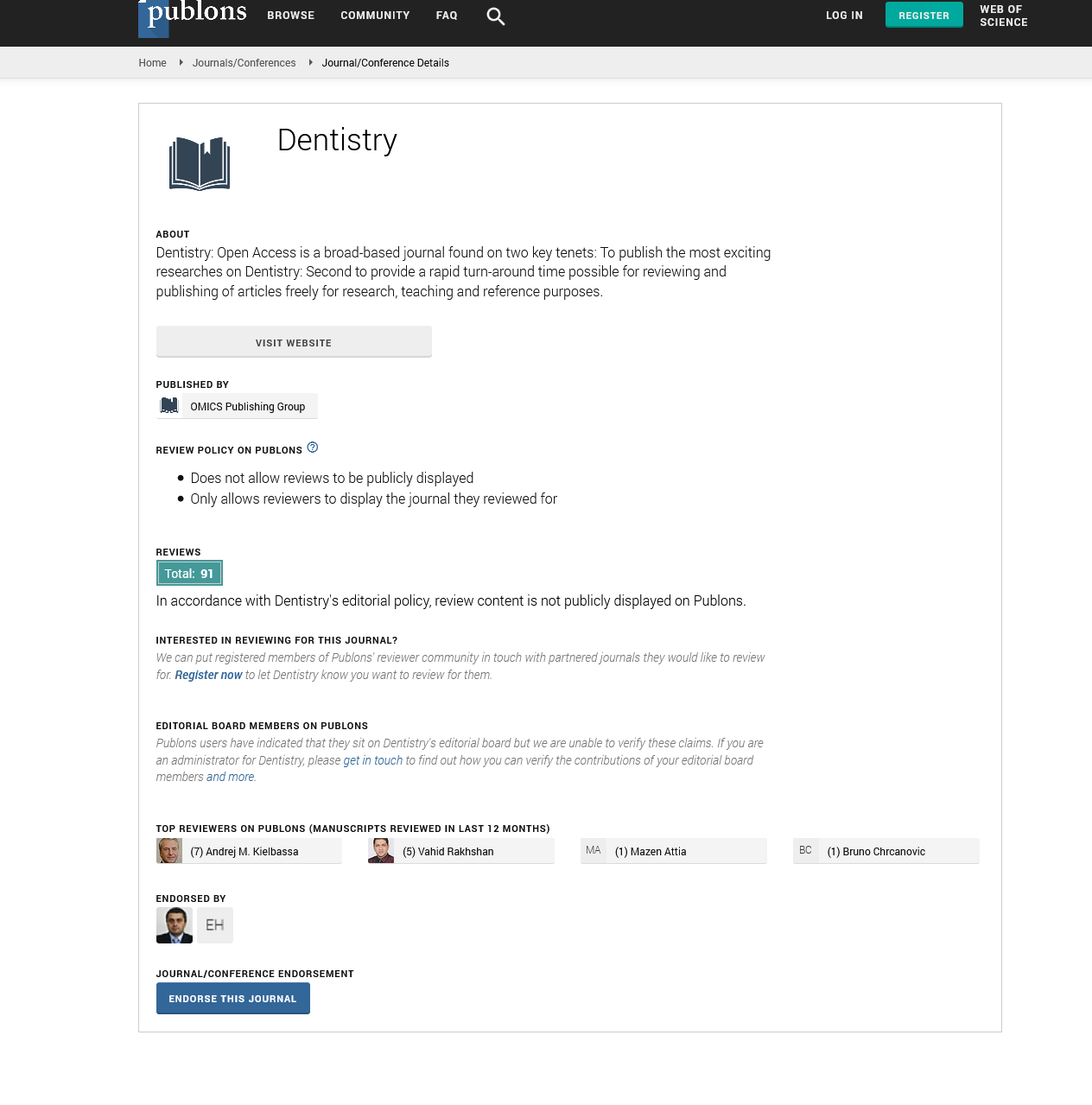Citations : 2345
Dentistry received 2345 citations as per Google Scholar report
Indexed In
- Genamics JournalSeek
- JournalTOCs
- CiteFactor
- Ulrich's Periodicals Directory
- RefSeek
- Hamdard University
- EBSCO A-Z
- Directory of Abstract Indexing for Journals
- OCLC- WorldCat
- Publons
- Geneva Foundation for Medical Education and Research
- Euro Pub
- Google Scholar
Useful Links
Share This Page
Journal Flyer

Open Access Journals
- Agri and Aquaculture
- Biochemistry
- Bioinformatics & Systems Biology
- Business & Management
- Chemistry
- Clinical Sciences
- Engineering
- Food & Nutrition
- General Science
- Genetics & Molecular Biology
- Immunology & Microbiology
- Medical Sciences
- Neuroscience & Psychology
- Nursing & Health Care
- Pharmaceutical Sciences
Abstract
Evaluation of the Early Implant Loss in Elderly Patients: A 10 Years Retrospective Study
Aristides da Rosa Pinheiro, Marina Pinheiro, Valquiria Quinelato, Jose Jorge Schoichet, Rackel Gonçalves, Alexandre Campos Montenegro, Telma Aguiar, Aldir Nascimento Machado and Priscila Ladeira Casado*
Objective: The present study aimed to evaluate the treatment with osteointegrated implants in elderly patients, by a retrospective and cross-sectional analysis.
Background: Despite the local and systemic peculiarities that accompany the elderly patient, the success rate can be high, provided that specific care is considered in clinical and surgical procedures.
Materials and methods: We evaluated 173 patients records of research participants who received late loading implants during 10 years. The specifications of the implants placed and the respective factors associated with success rates were described, including patients characteristics, the types of prostheses, the use of drugs and systemic diseases and region of implant placement. From a total of 1,000 patients` records analyzed, 173 research participants were included and evaluated in this study, being 104 (60%) women and 69 (40%) men, with a mean age of 63 ± 4.52 years. A total of 121 (70%) research participants had systemic disease and 106 (61.3%) used drugs.
Results: It was observed a greater tooth loss in the maxilla compared to the mandible (p<0.001), as well as a higher number of partial dental absence in the mandible (p<0.001). From the total of 805 implants placed, 33 (4%) implants were lost, with a higher incidence in the maxilla.
Conclusions: The success implant rate was 96%. It was concluded that the success rate after implant placement in elderly patients is high, even with medication use and systemic disease.
Published Date: 2025-01-16; Received Date: 2023-08-16

